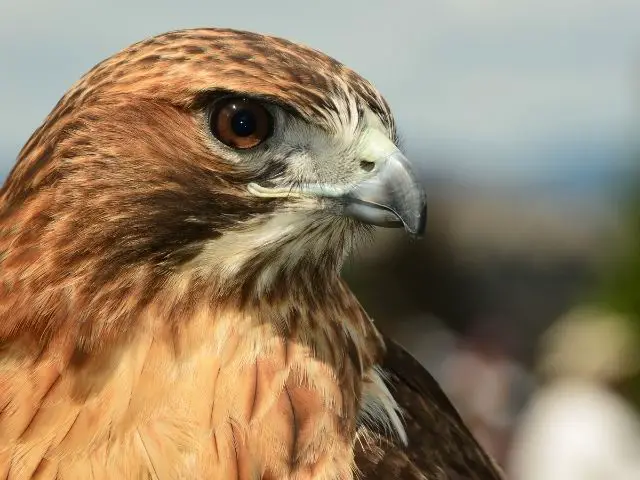California - the land of Disneyland, surreal beaches, and Hollywood, can give you unforgettable birding tours.
Aside from those...
It's home to over 600 species of birds, one of the largest populations in the US. The hawks in California are among these species. To see them, you'll explore marshes, beaches, forests, and so many other habitats.
So, which species will you be looking for in this state? Let's have a look...
California Hawks & Where To See Them
1. Red-Tailed Hawk
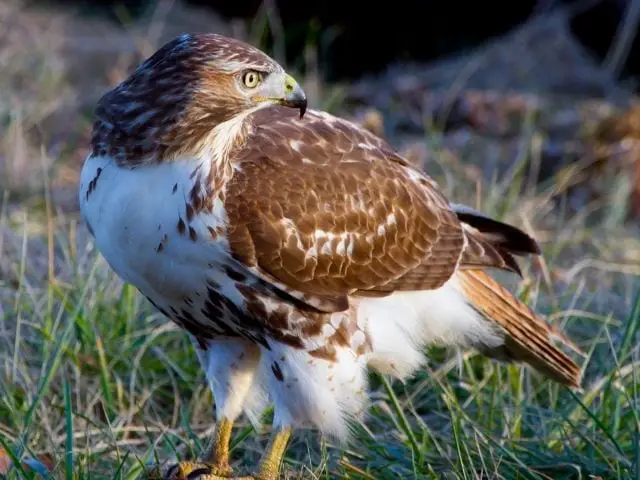
The easiest way to ID red tailed hawks in the wild is by their red tail. If you see this bird from above, you'll notice dark brown wings against a red tail. From below, it'll appear pale with dark wingtips and a dark band across its belly.
You don't have to visit a park to see the red-tailed hawk as you can even spot it in the countryside. These California natives inhabit almost any zone, as you can find them in grasslands as well as woodlands.
They also frequent open fields where there's pasture. Do you know why? They can soar over the land looking for voles or rabbits.
2. Rough-Legged Hawk
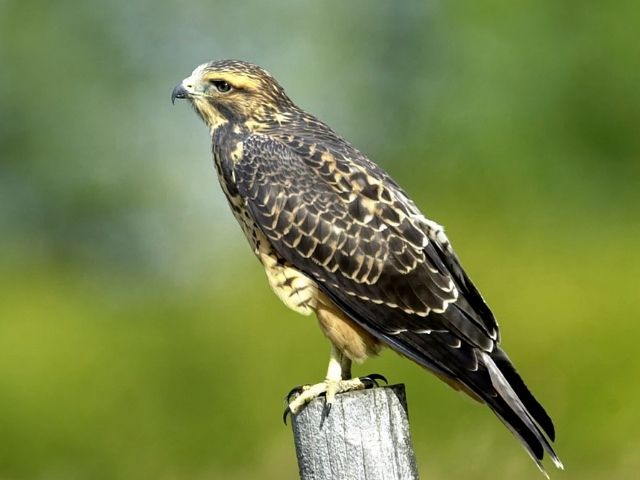
All the hawks we'll mention have a unique identification method, whether you'll have to differentiate California hawk sounds or look at the plumage.
The rough-legged hawk with light morph has a dark head against streaked plumage. When flying, it has a black band on its tail. The female has a dark stripe across her belly above a pale chest. The dark morph adult rough legged hawks are as beautiful, with their underwings split into white and dark colors.
These rough legged hawks have a non-breeding range in this state, mainly in the eastern and northeastern areas. By the way, the rough-legged hawk is not as big as the red-tailed hawk, though it can grow to a little over 20 inches long.
3. Swainson's Hawk
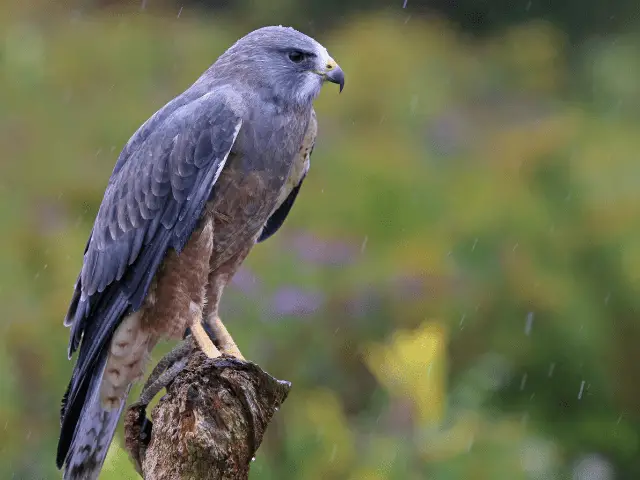
It migrates dramatically with a flock of thousands of birds; hence, the migration is the best time to see this raptor. If you're going birding any other time, you can spot this California hawk in prairies and grasslands.
It even hunts in farmlands, on foot, to catch insects and mammals. However, these hawks also hunt from the air by soaring over a prairie.
They eat rodents and reptiles, but after the breeding season, they prefer insects.
4. Northern Goshawk
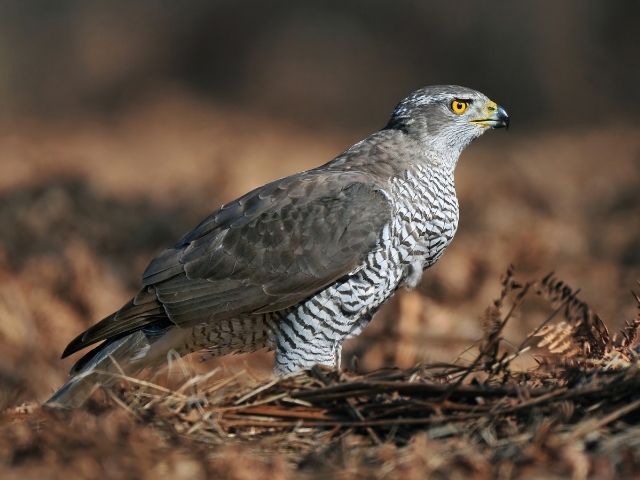
Earlier, we mentioned that sounds help you ID them. Well, to know it's a northern goshawk listen for KI-KI-KI sounds repeated about 20 times when protecting a nest from prey.
If you still can't tell whether you're looking at northern goshawks look out for a gray crown, a belly with gray barrings, and a gray back. Some may even call them gray hawks.
The northern parts of this state have a year-round and a non-breeding population of northern goshawks. However, the southern side has a scarce non-breeding population of these gray hawks.
5. Northern Harrier
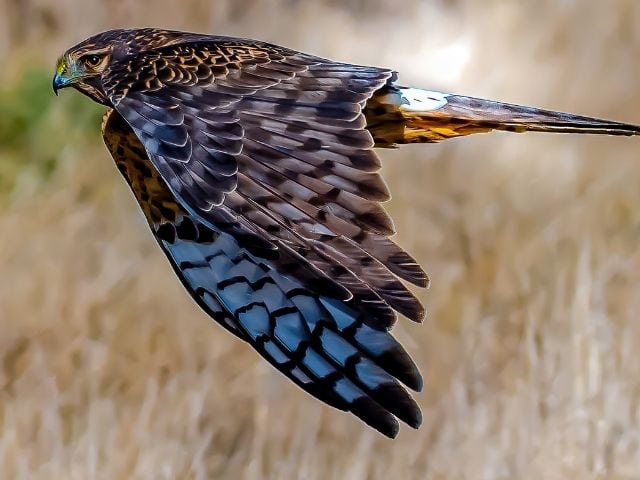
California has a non-breeding range of northern harriers. It flies lower than most raptors gliding with its wings in a V-shape.
Breeding mates protect their nests from predators like owls, crows, and ravens. They also have to protect their eggs and nestlings from domestic animals since northern harriers build their nests on the ground in bulrush or willow.
The most common habitats for these birds of prey are wetlands and grasslands with dense vegetation. In California, you may find them in upland areas.
6. Ferruginous Hawk
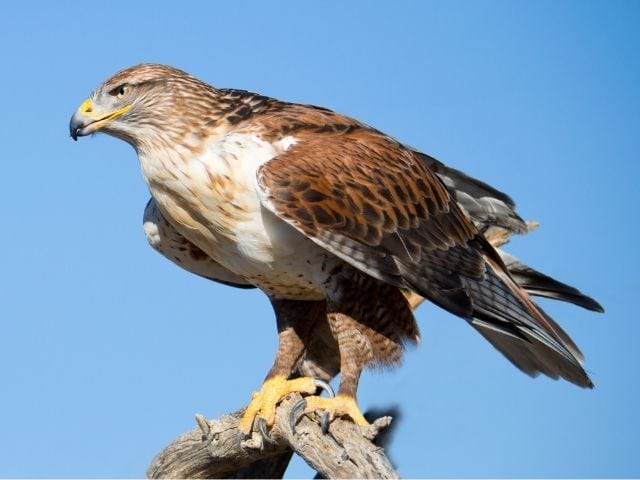
It's a rare sighting; luckily, it winters in some parts of California. It inhabits prairies and open fields, even farmlands; therefore, you can explore grasslands, plains, and deserts to see it.
The ferruginous hawk is a large bird with pale underparts or a chestnut-colored belly, depending on if it's a dark or light morph. It hunts like most raptors, either from the sky or by watching its prey from a perch. It feeds on small animals like rats as well as snakes and squirrels.
7. Sharp-Shinned Hawk
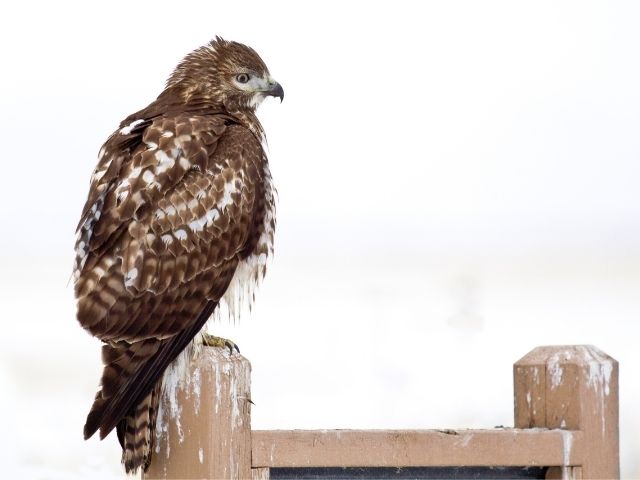
Pictures of hawks may not help differentiate a sharp-shinned from Cooper's hawk because they are almost alike from the gray crown to reddish eyes. You'd need to see the actual size of the birds, as even the adult sharp-shinned hawks are smaller.
It also has a long tail, and it nests in forests with aspens and conifers, among other trees. California has a year-round and a non-breeding population.
8. Cooper's Hawk

It's a small bird, though not as small as the sharp-shinned raptor. Cooper's hawks have red eyes; nonetheless, you may also see some of these small birds with yellowish eyes.
California has a year-round population of Cooper's hawk, and your search for it will take you to woodlands in the state.
If your bird feeder has corn or millet, some of the best foods for morning doves, you'll eventually attract Cooper's hawks as they feed on morning doves and other small birds. This California hawk also eats hares, bats, and pheasants.
9. Red-Shouldered Hawk
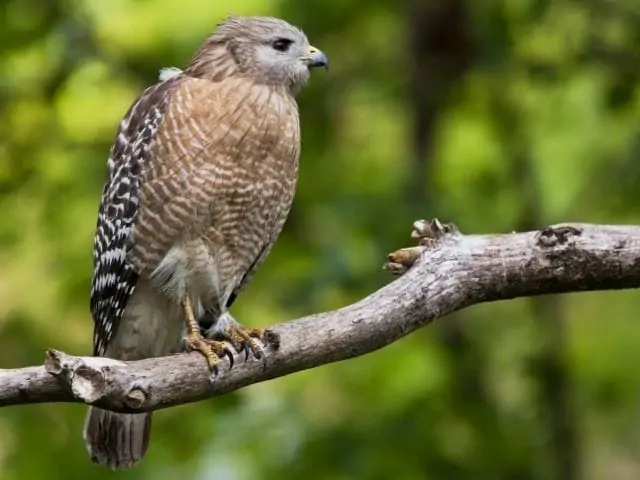
The red-shouldered hawk has a year-round population in the eastern states; then, it skips most central and western states of the US to inhabit California.
That's how lucky you are if you're a birder in California. You only need to find riparian woodlands or eucalyptus groves for sightings of the red-shouldered hawk. You can also search for it in residential zones as it frequents bird feeders to hunt sparrows and starlings.
There are other animals listed on the menu of red shouldered hawks that consist of lizards, crayfish, voles, chipmunks, and snakes. It can perch near a pond for hours, waiting for prey.
The tail is also a sequence of black and white bands. If you don't get the chance to see it in flight, you can still ID it by its reddish-brown underparts when perched on a tree.
So, which are the best destinations to see California hawks, such as the red shouldered hawks and the others in this review? To see the rough-legged hawk, plan a birding trip to Klamath Basin National Wildlife Refuges Complex.
If you'd like to spot more hawks at once, you'll love the Marin Headlands in Golden Gate National Recreation Area. There's a section called Hawk Hill where you can view these raptors from September to November.
Some of the species you'll be hoping to see are Cooper's hawk, the ferruginous hawks, sharp-shinned hawks, the red-tailed ones, and the broad-winged hawks, which have broad wings that are short and pointed at the ends.
Broad winged hawks are a rare visitor to Cali, but records state that they were sighted in Point Loma in the fall. But then, since the 1980s, the broad winged hawks do not frequent the state anymore, and it's been said that you'll be lucky to find one broad-winged hawk in a year.
FYI: What avian species would prevail against the hawk? Read about falcon vs hawk and find out!
Frequently Asked Questions
What Type Of Hawks Live In California?
There are nine types of hawks in this state, including the red-tailed and ferruginous hawks. We've mentioned all of these species above.
The northern goshawk and the northern harrier are raptors of special concern in this state because of a reduction in breeding densities in some zones, such as the coastal redwood zone.
What Is The Largest Hawk In California?
The ferruginous hawks are California's largest raptor. Its length ranges from 20 to 25 inches, and its wing-to-wing length can extend to 56 inches.
Hear its sound in flight with this video:
Can You Own A Hawk In California?
Yes, if you have a permit that allows you to "take, import, export, possess, purchase..." a bird that California Endangered Species Act lists as an endangered or threatened species.
What Kind Of Hawks Are In Los Angeles?
You can spot the red-tailed, red-shouldered, and Cooper’s hawk species in Angeles.
Are there zone tailed hawks in California?
Zone tailed hawks are very uncommon in California, but it has been reported that one or two were spotted in Orange County.
Final Thoughts
Let's agree, California has so many experiences for a birder. It's even better if you're a beginner looking for a birding tour that'll ignite the adventure spirit. Why? Imagine sightings of nine raptors in one birding vacation.
You can start birding right from your backyard through sightings of Cooper's hawks, red-shouldered and sharp-shinned hawks. Additionally, as you drive away from towns, look out for red-tailed hawks. There are so many experiences awaiting you.

